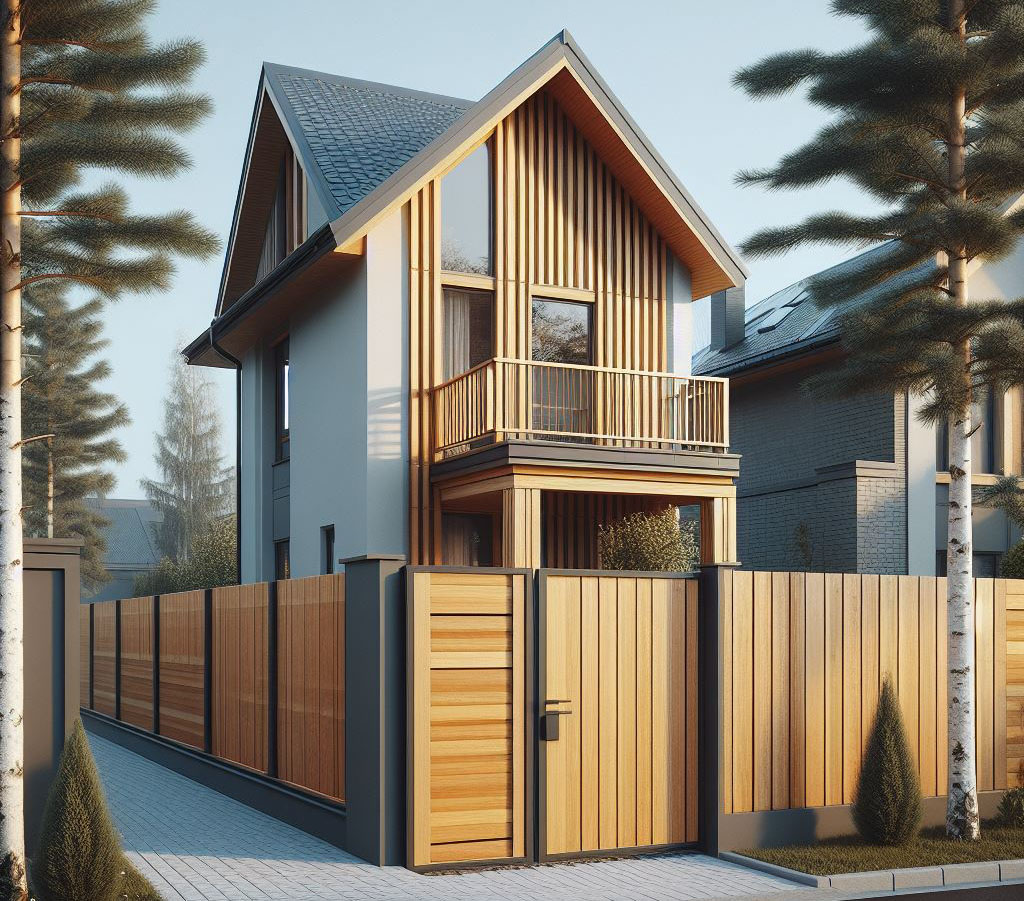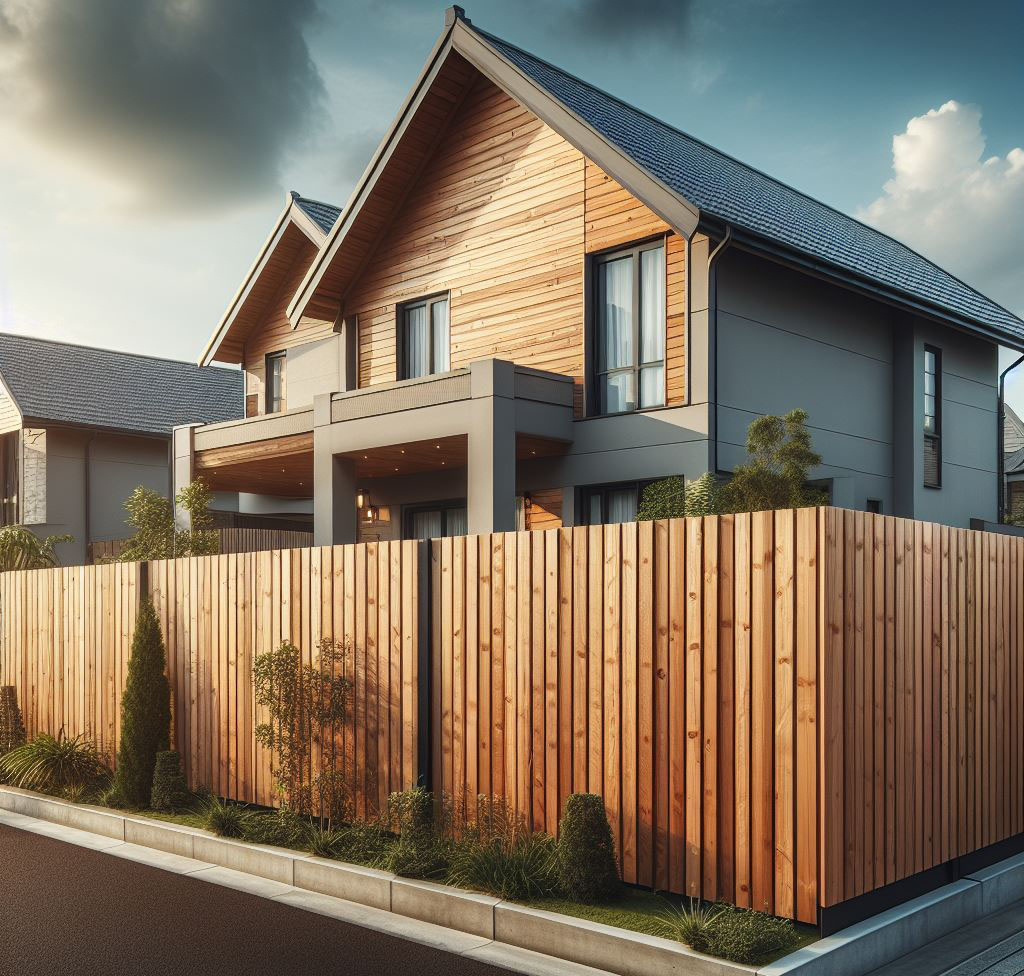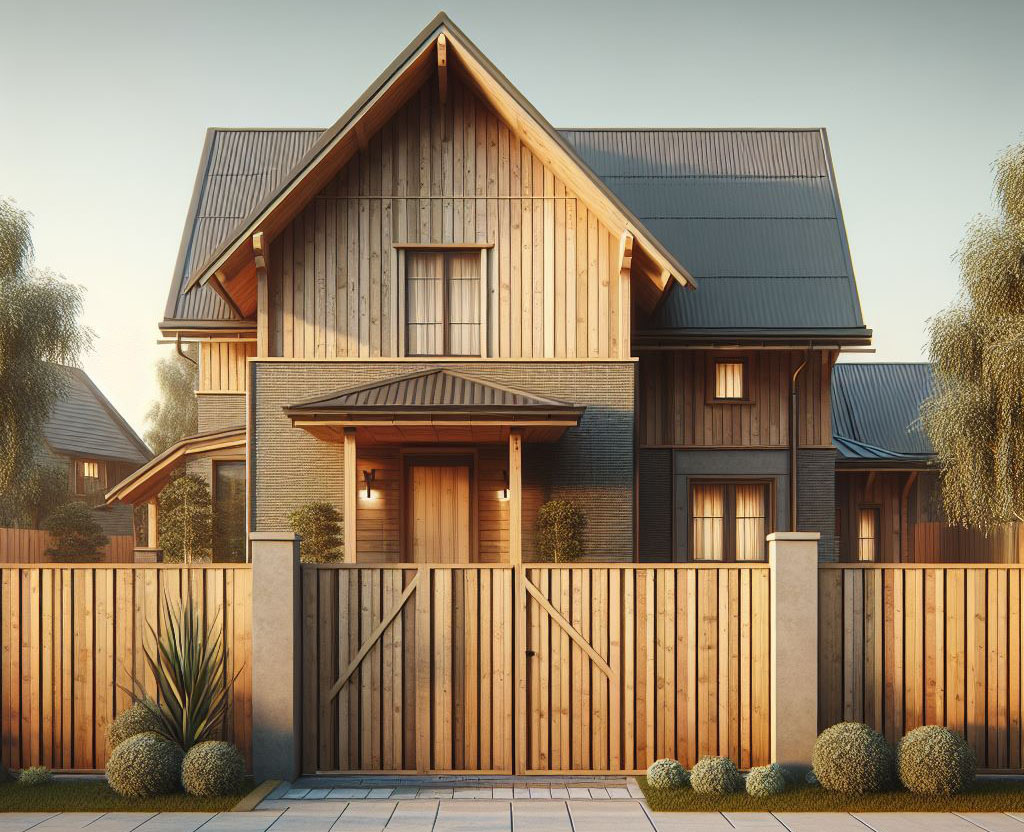Embarking on the journey of selecting the right wood fence for your property is akin to choosing the perfect frame for a prized painting. It’s not just a boundary, it’s an extension of your home’s character. Wood fences offer a symphony of styles, each with its unique melody, harmonizing with the landscape and the architecture of your home. From the timeless charm of picket fences to the sleek lines of modern designs, the range of wood fences available can cater to every aesthetic and functional need.

Key Considerations Before Choosing a Wood Fence
Before you roll up your sleeves, it’s crucial to weigh several factors:
- Climate and Weather Impacts: Wood is a living, breathing material. It reacts to its environment. In damp conditions, it might swell, in arid ones, it’s prone to cracking. Choosing a wood that can withstand your local climate is vital. For instance, cedar and redwood offer natural resistance to moisture and decay, making them ideal for humid regions.
- Maintenance Requirements: Every wood fence will require some upkeep. However, the extent varies. While cedar might gracefully age to a silvery patina with little maintenance, pine might need a regular coat of paint or stain to fend off decay. It’s a balance between aesthetics and the practicality of upkeep.
- Cost Implications and Longevity: Budget plays a pivotal role. Exotic woods might offer unrivaled beauty but at a higher cost. It’s a trade-off between initial investment and longevity. Sometimes, investing in a more durable wood can be more cost-effective in the long run due to its longer lifespan.

Main Types of Wood Fences
Let’s delve into the various styles:
- Picket Fence: Quintessentially American, it evokes a sense of nostalgia. Ideal for front yards, it offers a friendly boundary without obscuring views.
- Privacy Fence: Standing at 6 feet or higher, these fences are the guardians of your privacy. They create a secluded haven in your backyard, perfect for those seeking a private retreat.
- Split Rail Fence: Embodying rustic charm, this style is synonymous with country landscapes. It’s more about aesthetics and demarcating property lines than providing security or privacy.
- Board on Board Fence: A step up in privacy and style, this design overlaps boards, ensuring no gaps appear over time. It’s both functional and visually appealing.
- Shadow Box Fence: A clever design that offers a semi-private experience. From certain angles, it appears solid, but it also allows airflow and light through its alternating boards.
- Lattice Fence: Intricate and decorative, lattice fences are often used as garden accents, providing a light, airy boundary that supports climbing plants.
- Horizontal Slat Fence: Modern and minimalist, this design uses horizontal lines for a contemporary look. It’s a popular choice for modern urban homes.

Common Wood Types Used in Fencing
When it comes to selecting wood for your fence, understanding the characteristics of different types is key. It’s like choosing the right wood for a particular piece of furniture, each type has its strengths and ideal uses:
- Cedar: Known for its natural resistance to rot and insects, cedar is a go-to for fences. Its oils act as a natural preservative, offering longevity without chemical treatments. Cedar ages gracefully, acquiring a silver-gray patina that many homeowners find appealing. It’s a bit more expensive but worth it for its natural durability and low maintenance.
- Pine: Affordable and readily available, pine is a practical choice for many homeowners. To enhance its durability, it is often pressure-treated. This treatment helps it withstand decay and insects, making it a sturdy, cost-effective option for a wood fence.
- Redwood: Esteemed for its beauty and longevity, redwood is a premium choice. It has a natural resistance to decay and maintains its integrity over time. While it commands a higher price, its durability and rich color make it a worthwhile investment for a fence that combines aesthetics with endurance.
- Spruce: Commonly used for prefab fence panels, spruce is an economical option. It’s less expensive than cedar or redwood but will require regular maintenance, such as painting or staining, to prolong its life and maintain its appearance.
Customization and Style Tips
A wood fence offers more than just functionality, it’s an opportunity to add aesthetic appeal to your property. Here are some ways to customize your fence:
- Paint and Stain Options: The choice of paint or stain can dramatically affect the appearance of your fence. Stains can enhance the natural look of the wood, while paints can provide a bold statement. Consider the overall color scheme of your property when selecting.
- Combining Materials: For a unique fence, consider combining wood with other materials. For example, adding iron details can create an elegant look, while using stone pillars can add a sense of solidity and permanence.
- Incorporating Design Elements: Adding design elements like post caps or decorative lattice can transform a simple fence into a striking feature of your landscape. These details can reflect your personal style and complement the design of your home.

Installation Tips for DIY Enthusiasts
Installing a wood fence can be a rewarding DIY project. Here’s how to ensure a successful installation:
- Preparing the Ground: Proper preparation is crucial. Clear the fence line of any debris or vegetation and check for any underground utilities. Also, be sure to verify property boundaries to avoid any disputes with neighbors.
- Setting Posts Correctly: The stability of your fence depends on how well the posts are set. Dig holes to a depth of at least one-third the height of the post. Use concrete to secure the posts, ensuring each one is plumb and at the correct height.
- Ensuring Alignment and Stability: As you attach the panels or rails, continuously check for alignment and level. A well-built fence should be both aesthetically pleasing and structurally sound. Take your time to measure and level each section for the best results.
Professional Installation vs. DIY
When weighing the options between DIY and professional installation of a wood fence, consider a few key points. DIY projects can be rewarding and cost-effective, but they require a significant investment in time and skill. If your project is complex or your property presents challenging terrain, hiring a professional might be the wise choice. Professionals bring expertise, efficiency, and the right tools to handle unexpected issues.
In terms of cost, DIY typically cuts expenses significantly, often by half. However, remember that any mistakes made during DIY can add up and potentially offset these savings. Professional installation varies based on materials, design, and landscape, ranging from $15 to $70 per linear foot.
Maintenance and Upkeep
Maintaining a wood fence is essential for its longevity and appearance. Annual inspections are recommended to identify any loose, warped, or rotting boards. Regular cleaning and treating the wood with stain or sealant every two to three years can greatly extend the life of your fence.
To further prolong the life of your wood fence, keep plants and debris clear to prevent moisture buildup. Also, ensure that sprinkler systems do not directly hit the fence, as constant moisture can accelerate decay.
Environmental Considerations
Sustainable practices in fencing not only benefit the environment but also contribute to the longevity and quality of the fence. When selecting wood, opt for sources certified by organizations like the Forest Stewardship Council (FSC), which ensures that the wood is harvested sustainably.
For treatments and maintenance, choose eco-friendly options such as water-based stains and sealants. These products are less harmful to the environment and safer for the surrounding soil and plants.
FAQ Section
For durability, cedar and redwood are superior choices. Their natural resistance to rot and insects makes them long-lasting options, albeit at a higher price point compared to other woods.
Conduct a thorough inspection annually. Treat your fence with a stain or sealant every two to three years to protect it from weathering and decay.
Yes, by choosing sustainably sourced wood and using eco-friendly treatments, your wood fence can be both environmentally responsible and durable.
DIY installations can range from $5 to $15 per foot, while professional installations can cost between $15 to $70 per foot, depending on various factors like materials and labor costs.
Consider the architectural style of your home and your functional needs. The right fence should complement your home’s aesthetics while fulfilling its intended purpose, whether for privacy, security, or decoration.
